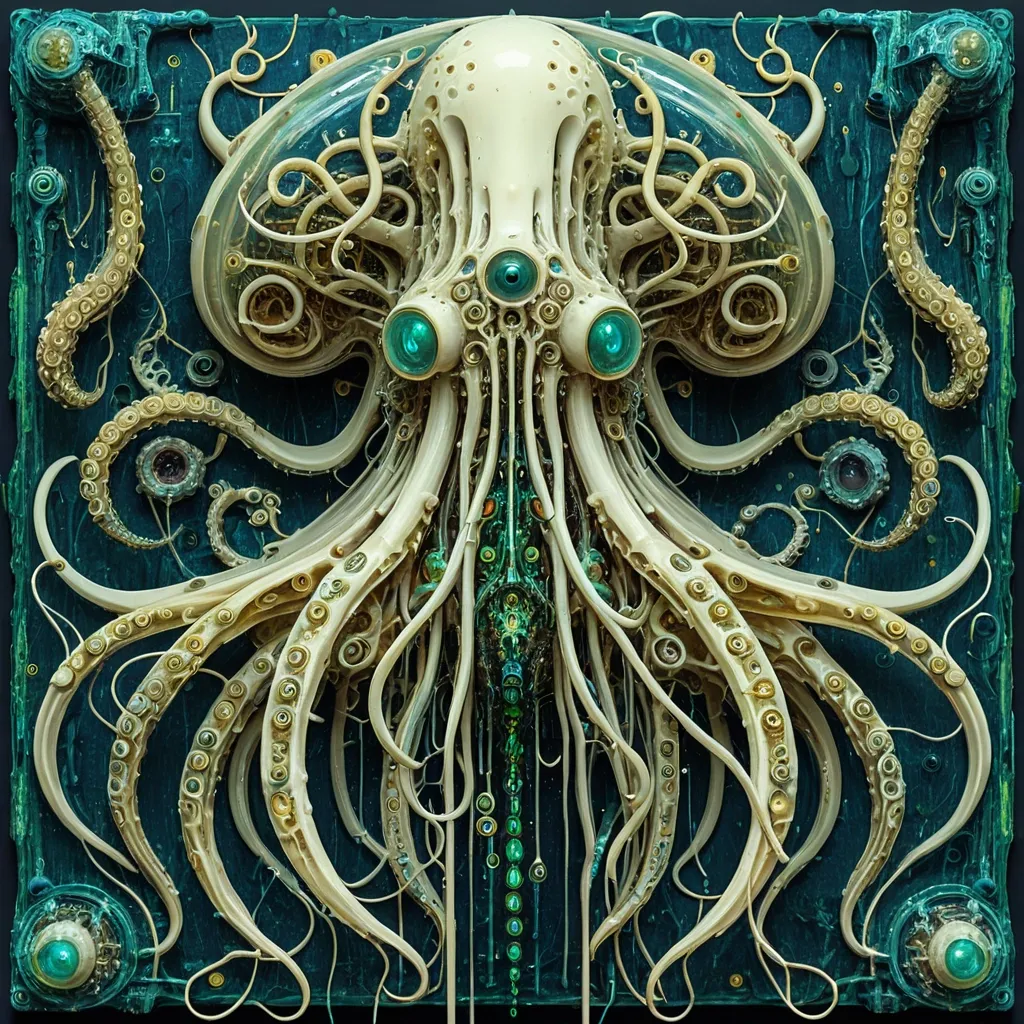Search Results for armor
Explore AI generated designs, images, art and prompts by top community artists and designers.

Epic fantasy scene featuring a powerful female figure levitating in mid-air. Her body is upright , arms extended horizontally in a T-pose , legs together , as if suspended by magical energy. She has a voluptuous , strong feminine figure , well-proportioned and heroic. Her long dark hair flows freely around her , moved by an unseen wind. She wears fantasy-style garments or armor adapted to her form , elegant and otherworldly , made of mystical fabrics or enchanted materials. Behind her unfolds a vast fantasy world: floating islands , distant mountains , ancient ruins , and a dramatic sky filled with clouds and glowing light. Magical energy radiates subtly around her body. Cinematic lighting , high fantasy atmosphere , ultra-detailed , dynamic clouds , epic scale , powerful and divine presence , 8K quality. ,
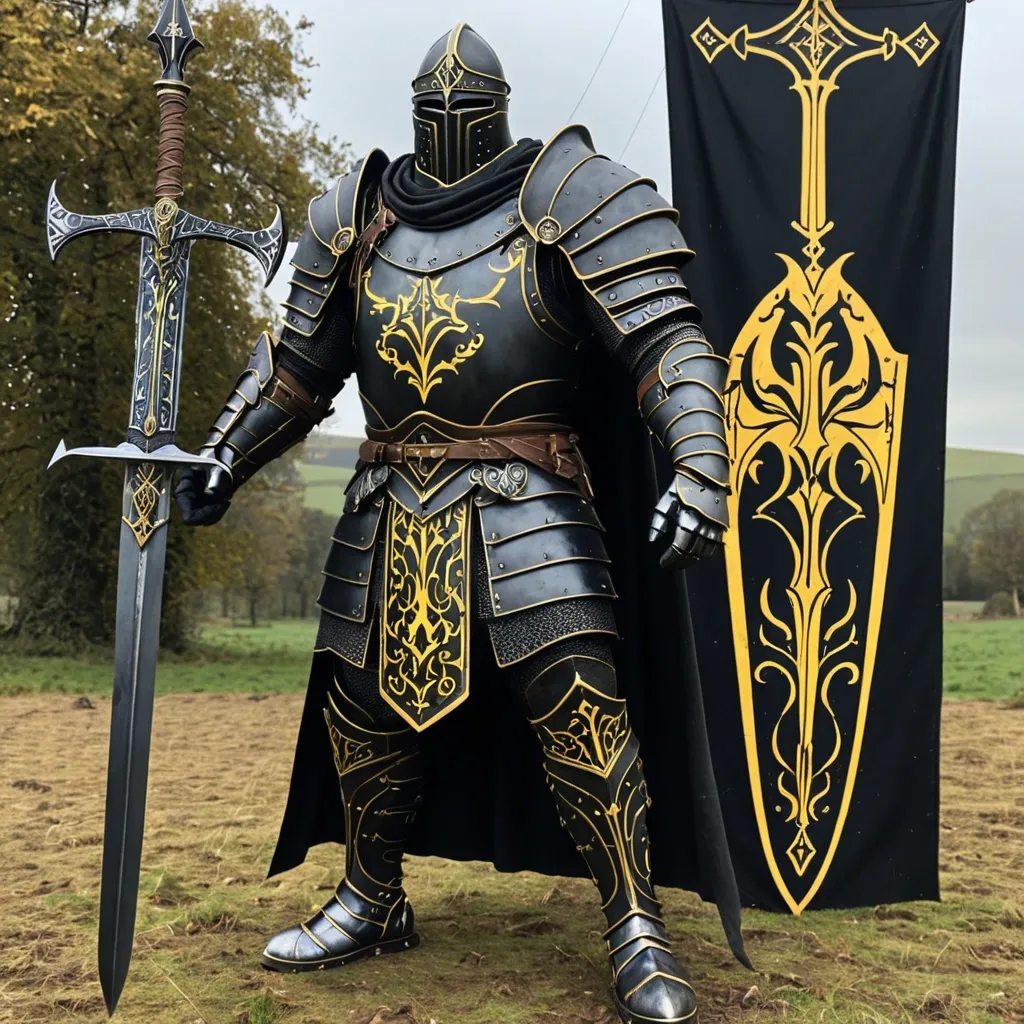
A Half-Giant son of Kings Legacy stands with Pigments of Perseverance at giant tall - he wears heavy dark iron armor plate engraved in the vernier motif , a great knight who dual wields great fatal blades of onyx and obsidian this knight is ready for any battle field. , behind him flows the great lemon banner with golden vernier marking his place in the field. ,

an oil painting featuring a powerful female warrior in a dynamic pose. She has long , flowing black hair and a determined expression. Her skin is light , and she has striking facial features with bold makeup. The character is adorned in a metallic silver and red armor , with intricate designs and a prominent chest plate. Her arms are wrapped in black and red fabric , and she holds a large , imposing sword with a weathered blade. The background is concrete grey and blood red , enhancing the dramatic and intense atmosphere of the scene. The overall composition is bold and visually striking , emphasizing strength and confidence. ,

Image is an oil digital illustration featuring a powerful female warrior in a dynamic pose. She has long , flowing black hair and a determined expression. Her skin is light , and she has striking facial features with bold makeup. The character is adorned in a metallic silver and red armor , with intricate designs and a prominent chest plate. Her arms are wrapped in black and red fabric , and she holds a large , imposing sword with a weathered blade. The background is concrete grey and blood red , enhancing the dramatic and intense atmosphere of the scene. The overall composition is bold and visually striking , emphasizing strength and confidence. ,

A hyper-realistic depiction of a Indian man piloting a large , a man attached in the uploaded reference image (Keep face of person 100% accurate from the reference image) , industrial-style Bullet Train in a relaxed pose. The Bullet Train retains its bulky and mechanical design , constructed with silver-metallic armor and blue colors , realistic look. Dark blue “Indian Railway” logo integrated naturally on. The cabin made from glass like glass globe , revealing the pilot seated and drive , leaning slightly on one armrest , with a action and contemplative expression. His outfit is casual , light blue shirt and dark blue pant with the Bullet Train's imposing and heavy-duty aesthetic. The train's design includes large , rounded wheels for sped , and visible pistons and wiring for enhanced realism. The cabin is equipped with detailed controls , levers , and screens that showcase faint glowing interfaces. The silver-metallic surfaces of the Train have soft reflections , showing realistic lighting with highlights on edges and shadows in recessed areas. The angle of the view is a three-quarter front perspective with a slight tilt downwards to capture both the pilot and the intricate details of the Bullet Train's design. The background is Train station , lighting is soft and diffused , enhancing the realism by highlighting the Bullet Train's material textures and the natural skin tones of the pilot ,

Create a highly detailed cyberpunk-style digital artwork featuring two characters from the gangsters Impact standing together in front of the Kazan Cathedral in Saint Petersburg , Russia. The scene should be set at night with a darker background to make the characters stand out more prominently. Neon lights should subtly illuminate the cathedral and surroundings , but with reduced brightness in the background so the focus is on the characters. Streets should be wet with soft reflections , and there should be minimal ambient light around the edges of the scene. The characters should keep their original outfits but be enhanced with cyberpunk elements such as glowing armor details , augmented weapons , and neon accents. Ultra-realistic , cinematic composition , high detail , 8K resolution. ,

A fierce warrior woman appearing as a crystalline skin , rainbow colors and flowers with braided red hair , clad in cracked bronze armor and a fur-lined cape , stands atop a snow-covered mountain ridge as a blizzard howls around her; she unsheathes a massive glowing sword , its runes pulsing with crystalline and charges forward into the storm with determined eyes; the camera tracks her from behind in a dynamic follow shot , snow whipping past the lens , rim light accentuating the sharp angles of her silhouette against the storm; dramatic epic fantasy style with high contrast , wind-driven motion blur , and sweeping orchestral tension ,

A whimsical scene depicting a knight in shining armor attempting to tame a mischievous , fluffy creature that resembles a cloud made of stardust. They are in a meadow filled with bioluminescent flora , under a sky where constellations form mythical beasts. The illustration style is akin to a vintage storybook , with soft , dreamy colors and a gentle , narrative quality. ,

A powerful angelic figure emerges in a misty , urban environment , standing confidently in the center of the composition with a soft ethereal glow surrounding her. She possesses striking long , golden strands in the hair , elven metal elegant hairstyles , sholder protect elven elegant golden armor , Makeupaugmenting , tattoos wavy white hair that cascades elegantly over her shoulders. holds a Futuristic sci-fi axe , sleek high-tech design , glowing plasma edges , dark metallic alloy , cyberpunk aesthetics , embedded energy core in the hilt , intricate details with outcuts , display for plasma power and tube amplifier intricate , The angel sports a daring white ensemble , featuring a crop top with intricate cutouts and golden , silver skirt with chainsand intricatedetails , (white:1.2). Her outfit is complemented by thigh-high , form-fitting boots and flowing fabric at her back that mimics angelic feathers. Her large , majestic wings , formed from iridescent feathers , unfold gracefully behind her , accentuating her otherworldly presence. The background is blurred , suggesting an alleyway with minimal details , to emphasize her figure (focus:1.5). Soft beams of light filter down , creating rays that highlight the contours of her face , showing delicate features and an expression of confidence and serenity. Ensure that the lighting is dramatic , with soft contrasts enhancing the mood (lighting:1.2). Include some sparkle effects in the air for added magic and an ethereal feel. Avoid harsh shadows to maintain a soft , dreamlike atmosphere (negative: harsh shadows). ,

A hyper-realistic depiction of a piloting a large , industrial-style Railway train in a relaxed pose. The Railway train retains its bulky and mechanical design , constructed with yellow armor and black accents , realistic look. The cockpit made from glass like glass globe , revealing the pilot seated and drive , leaning slightly on one armrest , with a action and contemplative expression. Her techno outfit is casual , contrasting with the Railway's imposing and heavy-duty aesthetic. The Railway's design includes large , rounded feet for stability , sturdy hydraulic joints , and visible pistons and wiring for enhanced realism. The cockpit is equipped with detailed controls , levers , and screens that showcase faint glowing interfaces. The metallic surfaces of the Railway have soft reflections , showing realistic lighting with highlights on edges and shadows in recessed areas. The angle of the view is a three-quarter front perspective with a slight tilt downwards to capture both the pilot and the intricate details of the Railway's design. The background is a Railway station , providing a stark contrast that emphasizes the metallic textures and overall composition. Lighting is soft and diffused , enhancing the realism by highlighting the Railway's material textures and the natural skin tones of the pilot ,

Battle of Mahabharata , 1600 , eye-level amid samurai formations clashing in misty autumn fields , banners streaming , armor gleaming through drifting smoke , distant hills veiled by rain , crimson desert planet , gazing up at a swirling text "ॐ" is a sacred syllable , mantra , and spiritual symbol in Hinduism , that dominates the night sky. In the distance , monolithic , geometric structures of a Hinduism civilization pierce the horizon. Style: Matte Painting , detailed and atmospheric , Eye-level view , Full scene , 4K ,
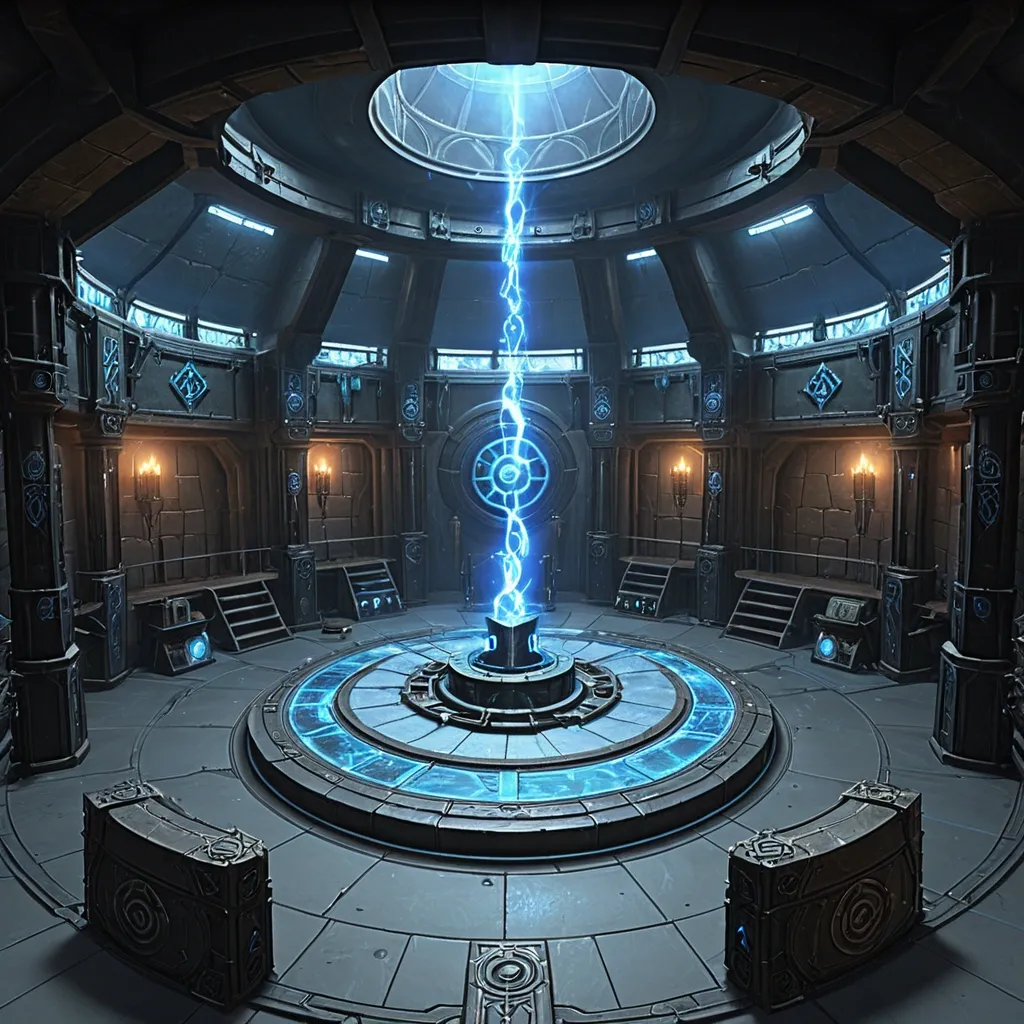
Training Chamber (Arcane Defense Hall) Purpose: Testing and tempering of artifacts and spells. Features: Circular containment arena with concentric obsidian runes. Pivoting mirrors and magic-absorption conduits in walls. Elevated balcony for observers and Orwen’s control console. Equipment racks with enchanted weapons , armor , and focus tools. Side alcove with first aid and spell dampeners. Lighting: Alternating blue-white flashes , residual sparks , energy hum. ,
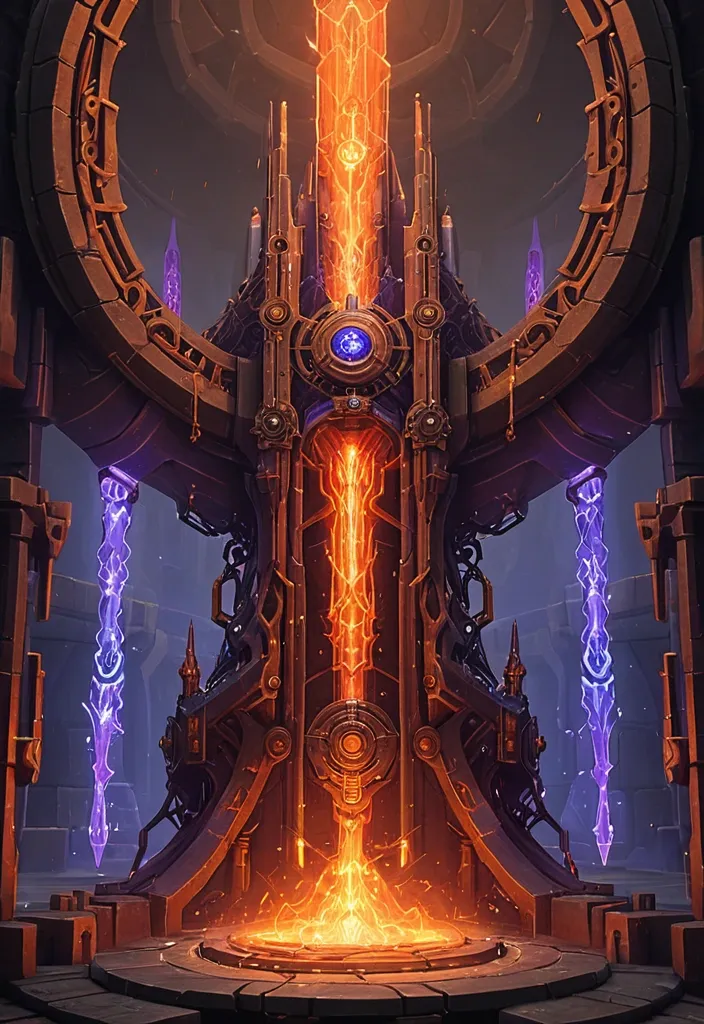
A deep mechanical hall branching from the Training Chamber , filled with runic anvils , smelters , and enchantment circles. Here , dwarven engineering meets Trieltan crystalcraft — metal and mana fused through science. Flames flicker in color from crimson to violet depending on the material’s attunement. A central hammering automaton , one of Orwen’s oldest constructs , pounds rhythmically , sparks cascading across its shoulders. Weapons , armor plates , and unfinished constructs line the walls , each tagged with Orwen’s shorthand — test numbers , resonance ratios , or sarcastic comments. Lighting: molten orange and blue from magical forges. Sound: rhythmic strikes , hissing steam. Mood: intense focus , creation as controlled chaos. ,
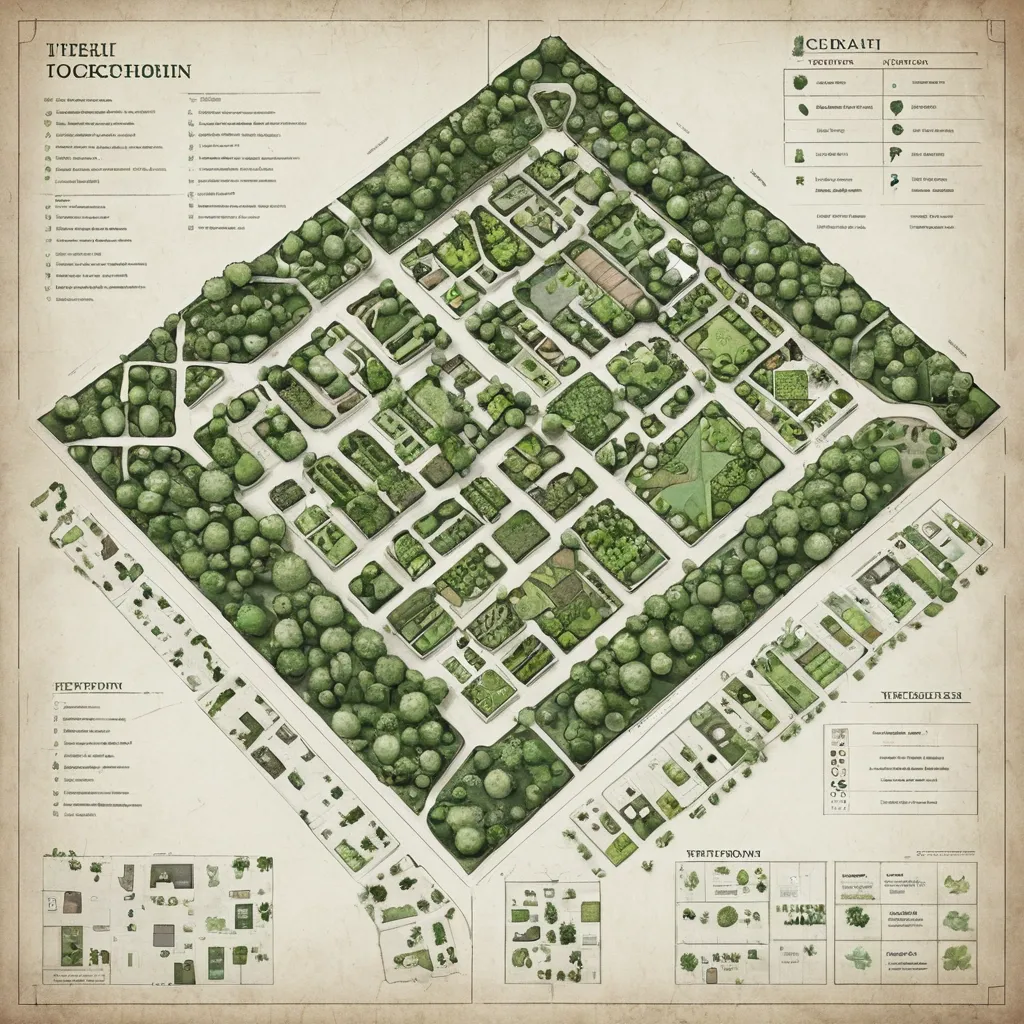
Here’s the **complete top-down layout and floor organization** of the Unsilenced Clocktower — integrating your new **Herbalist Greenhouse** and **Training Chamber** while keeping visual , architectural , and thematic consistency. It’s structured for easy translation into a map or illustration prompt. --- # 🕰 **The Unsilenced Clocktower – Structural Blueprint** ### **Architectural Style** Black-iron framework with brass support columns , gear-driven lifts , crystal illumination , and alchemic energy conduits linking all levels. Vertical balance: **industrial base → residential middle → arcane summit.** All spaces connected via a central spiral stair and a teleport-lift running on the Eye of Hours’ pulse. --- ## **LEVEL 1 – Ground Floor: Reception & Archives** * **Purpose:** Guild entry , civilian interface , recordkeeping. * **Design:** * Tall iron-framed doors leading to **Butler’s reception desk**. * **Civic archives** in brass filing cabinets , stamped with the seal of the Unsilenced. * Elevator cage and spiral stairs in the center. * Discreet door to **vault access** beneath the floor. * **Ambience:** Lamplit , orderly , faint hum of machinery underfoot. --- ## **LEVEL 2 – Guild Quarters & Workshop** * **Purpose:** Living space , repair , everyday operations. * **Features:** * **Workbenches** with open runic blueprints. * **Dorm alcoves** curtained with embroidered sigils for privacy. * Compact **kitchen and communal table** for late-night work sessions. * Tool racks , gears , pulleys , and mechanical prosthetics in progress. * **Lighting:** Warm brass sconces and crystal lamps. --- ## **LEVEL 3 – Training Chamber (Arcane Defense Hall)** * **Purpose:** Testing and tempering of artifacts and spells. * **Features:** * **Circular containment arena** with concentric obsidian runes. * Pivoting mirrors and magic-absorption conduits in walls. * Elevated **balcony** for observers and Orwen’s control console. * Equipment racks with enchanted weapons , armor , and focus tools. * Side alcove with **first aid and spell dampeners.** * **Lighting:** Alternating blue-white flashes , residual sparks , energy hum. --- ## **LEVEL 4 – Greenhouse Conservatory** * **Purpose:** Potioncraft , herb cultivation , magical flora study. * **Design:** * Glass dome roof with brass ribs , filled with lush plants glowing in warm mist. * **Alchemy benches** , hanging glass terrariums , and self-watering copper pipes. * Spiral stair leading to upper deck catwalks. * Containment terrarium for volatile plants under runic seals. * Connection door to the laboratory above via runic elevator. * **Lighting:** Natural light filtered through golden-tinted glass; ambient mist sparkle. --- ## **LEVEL 5 – Research Deck / Teleportation Dock** * **Purpose:** Central hub for Disc resonance studies. * **Features:** * **Resonator Table** at center (Disc analysis). * Floating quills and holographic projectors. * Side alcoves with teleport pads and sigil calibrators. * Window ring providing view of Trielta skyline. * Ladder access to observatory above. * **Lighting:** Cold white magical glow , subtle runic shimmer. --- ## **LEVEL 6 – Eye of Hours Observatory** * **Purpose:** Observation , navigation , and planar alignment. * **Design:** * Vast **crystal lens** suspended in clock-armature overhead. * Star charts , orreries , and arcane instruments scattered across floor. * A narrow catwalk circles the chamber , open to the skyline. * Viewport allows visual connection to distant ley-line convergence points. * **Lighting:** Moonlight refracted through rotating crystal , cool blues and golds. --- ### **STRUCTURAL EXTRAS** * **Vault (Sublevel):** Secure storage for Discs and relics , protected by Silence Ward. * **Exterior Balcony (adjacent to Greenhouse):** Overlooks Oldhut rooftops; used for sky readings and cooling brews. * **Hidden Lift Shaft:** connects levels 1 → 6 , running through the tower’s core , powered by Orwen’s leywheel. --- ### **Image Prompt for Top-Down Cutaway Map** > *A detailed fantasy cutaway illustration of a six-level clocktower headquarters , * blending **arcane architecture and steampunk design.** > Each level distinct: > > * reception hall (desks , ledgers , gears) , > * living workshop (bunks , tools , warmth) , > * training arena (obsidian rings , magical sparks) , > * greenhouse (glass dome , glowing plants , mist) , > * research lab (Resonator Table , runes , floating quills) , > * observatory (rotating crystal lens , starlight). > Include spiral stair and central lift through all floors. > Brass , iron , and crystal dominate the color palette; **golden light below , cool silver above.** > *Style:* semi-realistic digital painting , cinematic , highly detailed , slightly cutaway side view. ,
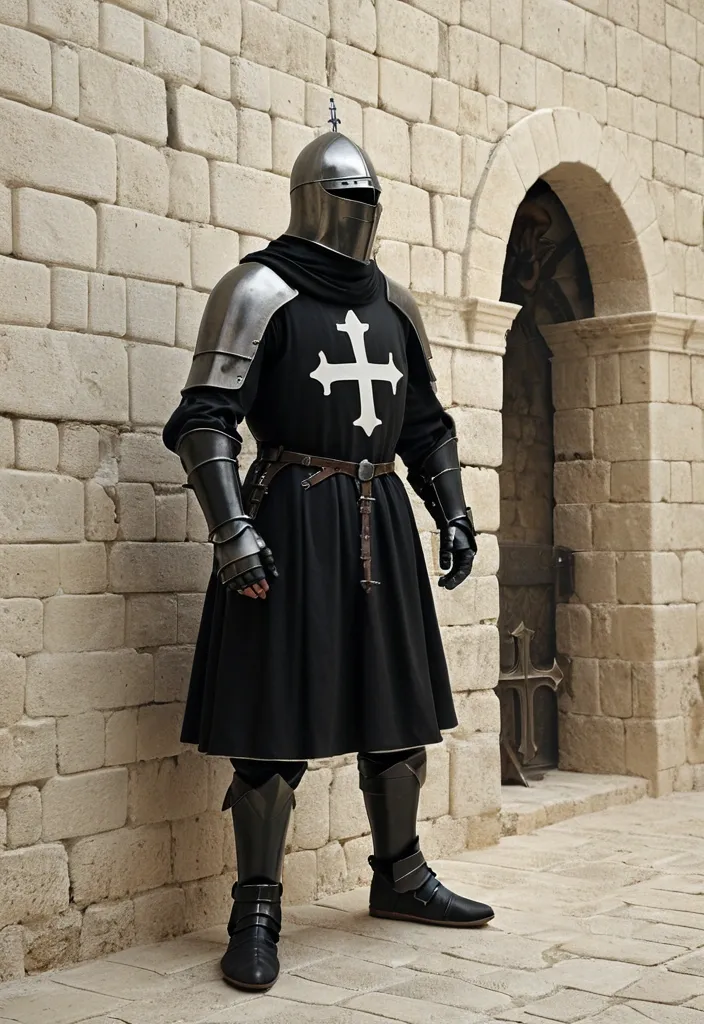
Knights Hospitaller , armored medieval knight in black surcoat with white cross , standing resolute in Maltese fortress setting , Style: hyperrealistic with a painterly texture , reminiscent of historical reconstruction art , detailed and atmospheric , Full body , Armored boots , Side View , 4K , White or Transparent Background. ,









